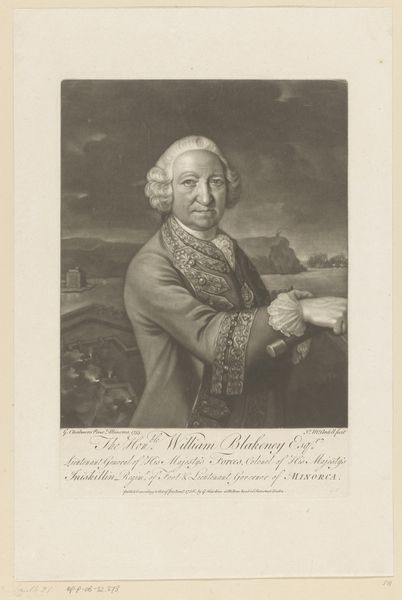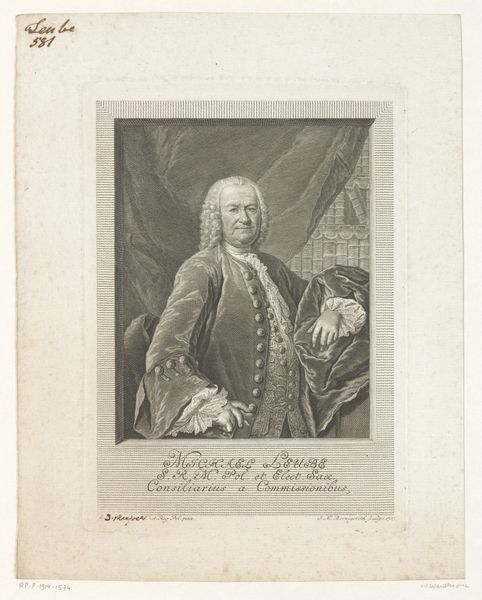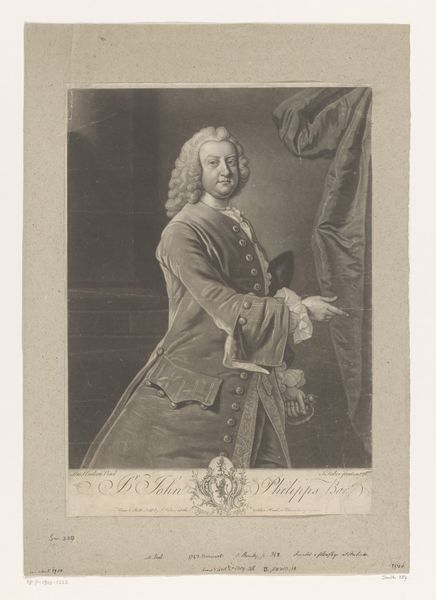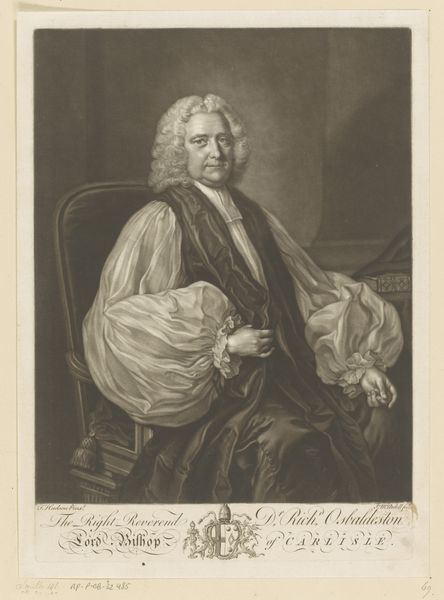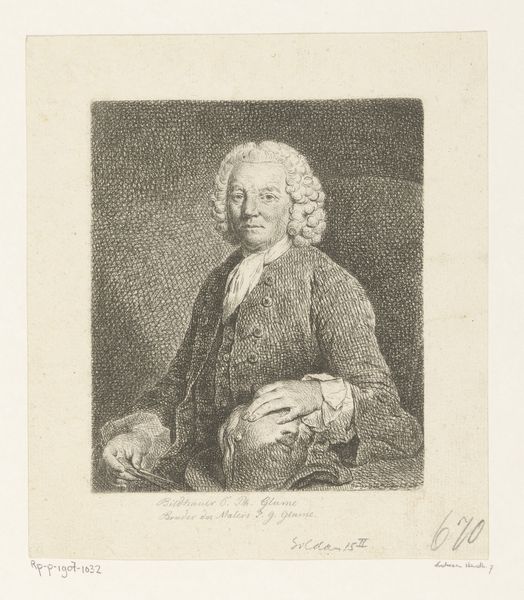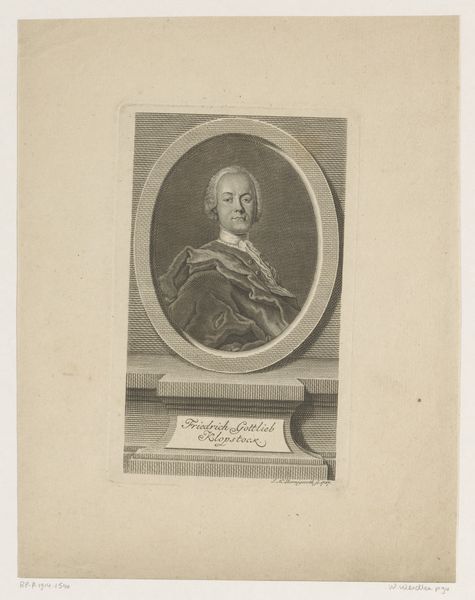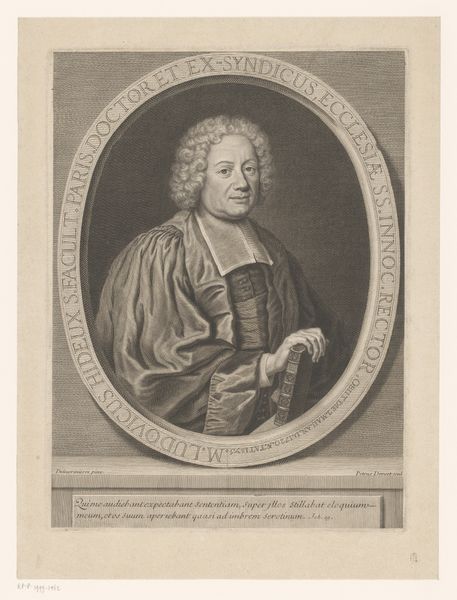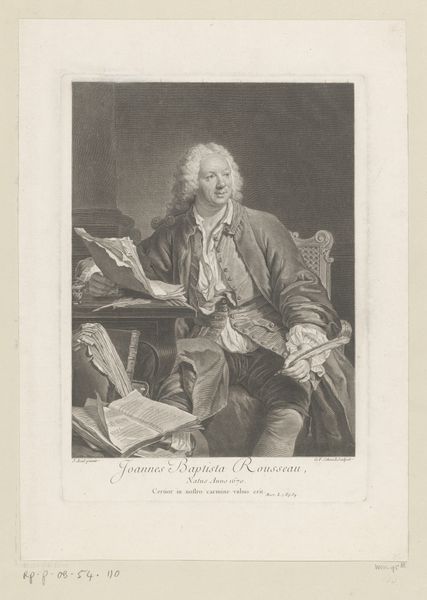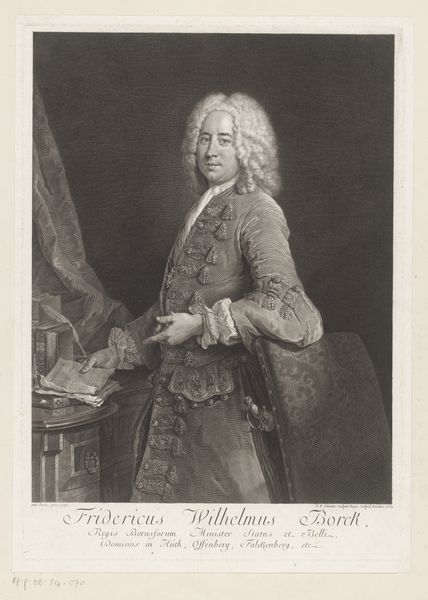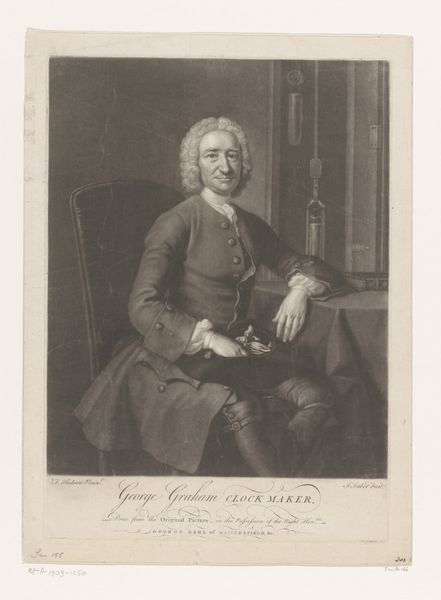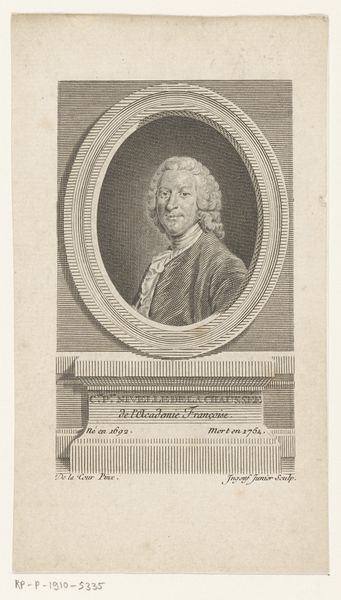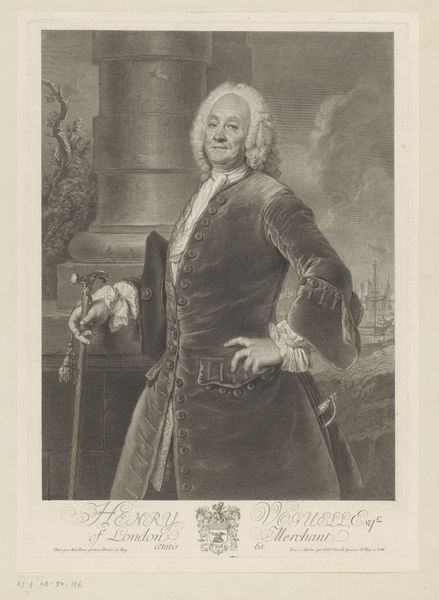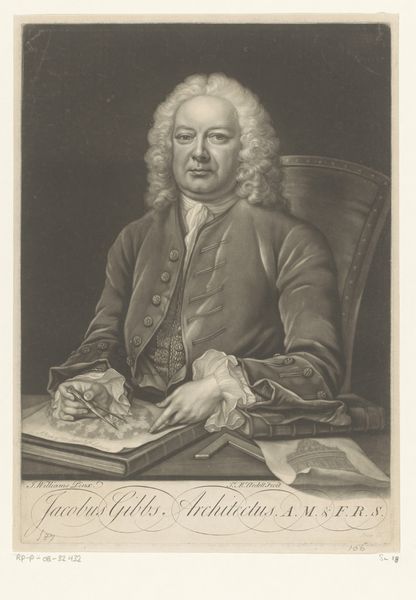
engraving
#
portrait
#
baroque
#
engraving
Dimensions: height 150 mm, width 100 mm
Copyright: Rijks Museum: Open Domain
Curator: Take a moment with me to examine this detailed print: “Portret van Antoine Pesne,” created in 1752 by Georg Friedrich Schmidt. It’s currently held here at the Rijksmuseum. Editor: The man depicted comes off quite calm and sophisticated in the engraving; his slightly angled pose, the gentle light across his face—it all evokes a quiet, almost reserved, intelligence. Curator: Indeed. Schmidt has masterfully rendered the textures of Pesne's velvet coat, and his powdered wig using engraving. This reproductive technique, a means of dissemination of images, in that time. Editor: I see it now! The engraving emphasizes the labor involved in artmaking and circulation; each line meticulously etched into the plate, reflecting the social realities of the Rococo elite versus the work conditions and access for most laborers. Curator: Exactly. The intaglio printmaking is inherently interesting, focusing on tools of production and consumption. We understand Schmidt worked as the court engraver in Berlin during this period, reproducing various commissioned portraits from paintings. Editor: Given Pesne's role as Premier Painter to the Prussian court and his place within the Académie Royale, one can infer how closely connected Pesne was with various rulers, artists, scholars and powerful circles in Prussia. The image then, represents, not just a likeness, but a specific set of power dynamics. Curator: Absolutely. The printmaking process—the choice of materials like copper, the engraver's labor, even the dissemination of the final product to patrons – speaks volumes about artistic creation during that era. This process solidifies the relationship between the maker, his sitter and his consumer, and provides clues for analysis in today's socioeconomic framework. Editor: When we frame it like this, the image becomes not only a portrait, but a vital historical document of class, labor, artistic practice and power structures in 18th century Prussia. Curator: Agreed; an interesting object for analyzing the artistic strategies and social dynamics. Editor: For me, seeing how process reflects political, gender, and race factors helps to contextualize art history.
Comments
No comments
Be the first to comment and join the conversation on the ultimate creative platform.
